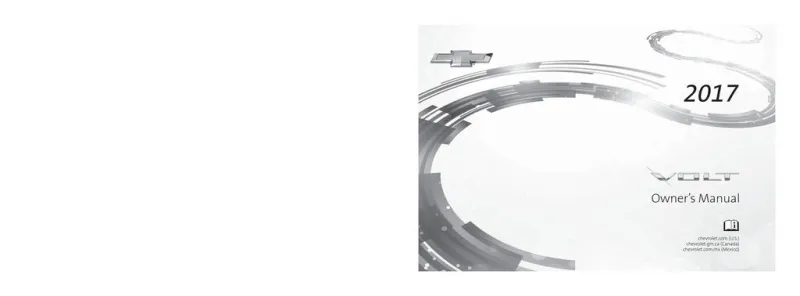2017 Chevrolet Volt Owner's Manual

Table of Contents
2017 Chevrolet Volt Overview
Introduction
The 2017 Chevrolet Volt is a remarkable plug-in hybrid that effectively combines efficiency, technology, and spirited performance. Designed for modern drivers who prioritize sustainability without compromising on comfort, the Volt stands out in the compact car segment. With its sleek design and innovative engineering, it is an optimal choice for those looking to navigate urban environments while being eco-friendly.
Powertrains
At the heart of the 2017 Volt is a sophisticated powertrain featuring a 1.5-liter four-cylinder gasoline engine combined with an electric motor. This intelligent system produces a combined output of 149 horsepower, enabling an impressive acceleration from 0 to 60 mph in just over eight seconds. The Volt offers an all-electric range of approximately 53 miles, and when combined with its gasoline engine, it can travel up to 420 miles before needing a recharge or refuel. With efficient regenerative braking technology, the 2017 Volt effectively maximizes energy conservation, making every drive more economical and environmentally friendly.
Trims
The 2017 Chevrolet Volt is available in two distinct trims: the LT and the Premier. The LT trim provides an excellent array of standard features, including a 7-inch touchscreen infotainment system, Android Auto and Apple CarPlay compatibility, and standard active safety technologies. The Premier trim elevates the experience with additional luxuries, such as leather-appointed seats, a Bose premium audio system, and advanced safety features like adaptive cruise control and rear park assist, ensuring that the drive is as enjoyable as it is safe.
Features
Equipped with a host of advanced technologies, the 2017 Volt offers a blend of convenience and functionality. Key features include the Chevrolet MyLink infotainment system, Bluetooth connectivity, and available navigation. Additionally, the Volt provides a comfortable interior with spacious seating and cargo options, emphasizing versatility for daily errands or longer trips.
Owners Manual
The owner's manual for the 2017 Chevrolet Volt serves as an essential guide for new owners, delivering comprehensive information on vehicle operation, maintenance, and safety. It includes detailed instructions on utilizing the Volt’s hybrid technology, charging options, and troubleshooting tips, ensuring that drivers can maximize their experience while minimizing confusion. It is a vital resource for a sustainable and efficient driving experience.
User manual download
The Chevrolet Volt owner manual for the 2017 model year is to be found in PDF downloadable format on this page. The owner manual for the model year 2017 is free and in English, but the repair manuals are usually not easy to get and may cost more.
Manual Questions
Fill the form below and someone will help you!

